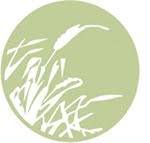There has been much interest recently in the fields of mental healthcare and wellness, as well as in the area of research psychology; on how to find ways to help individuals become more strengths-oriented. This means living more from one’s strengths, virtues, skills, talents, gifts, rather than from deficits. This may be new in terms of modern healthcare, but the fact is this is really nothing new - in instinctive or intuitive ways people have relied upon the use of personal strengths as long as humans have desired to improve their lives. Nonetheless, as the modern research is showing, a well-thought, evidence-based use of tools such as research, assessments, guidance, and coaching can be an extremely helpful aid in realizing and living one’s strengths.
Today, exciting research on strengths and practical application comes primarily from the emerging field of positive psychology. Positive psychology is spurring a paradigm shift toward wellness and wholeness, and is permeating psychology and mental health. Instead of the traditional focus on disease or illness; fixing what is wrong with people most of the time through the use of pills or surgery. Positive psychology is more holistic and focuses intensively on what is right and well with people, and on how individuals can draw upon their inner resources to improve their lives in terms of enhanced well-being, improved interpersonal relationships, work, creativity, and spiritual pursuits. Some of the best assessments currently available for helping to understand personal strengths and put them to use are the Realise2 developed by Alex Linley, the Strengthsfinder 2.0 by Donald Clifton, and the VIA by Martin Seligman. All of these assessments are simple to take and can be either taken online, or ordered directly from the publisher’s website at a moderate cost, or completely free (the VIA is free).
What’s cool about integrating strengths more fully into one’s life is that not only are the use of strengths empowering and can help maximize performance, but also improve quality of life by reducing stress and improving health. During the middle part of the 20th century, renowned stress researcher Hans Selye became one of the first to recognize that stress isn’t always destructive, and that positive lifestyle behaviors can be beneficial to physiology. He named beneficial stress, eustress. We all know in an intuitive way that when we overextend ourselves by taking on too many responsibilities, or simply not take sufficient self-care though proper sleep or diet, it can be detrimental to both our physical or psychological well-being. The destructive aspects of stress are fairly well known, but according to Selye, certain forms of stress can also have a specific positive effect upon our health and well-being. Eustress can be experienced when we acknowledge and consciously implement our strengths. Linley’s theory of strengths says that strengths energize people, which is interestingly very similar to health researcher Richard Lazarus’s definition (Lazarus followed up Selye’s research) of eustress which is, “the positive cognitive response to stress that is healthy, or gives one a feeling of fulfillment or other positive feelings.”
Just about anything in life, any activity, could be either stressful or fulfilling depending upon a person’s connection with it. For example, people who are high performers thrive or flourish in the same activities and tasks in which others become stressed out, or suffer from burnout. Why? There are a myriad of potential contributing factors, but a primary one is because the individual who thrives makes a connection and finds that particular task or activity as strength, whereas the other person finds it as a weakness. The key is very simple: When an activity is strength it energizes; but when it’s a weakness, it drains. When we begin to listen inwardly, practice introspection, mindfulness, reflection, and intuition (and, with the aid of assessments such as those mentioned above), we discover our strengths, thereby improving well-being by reducing distress and maximizing eustress.
Putting one’s strengths to use begins with understanding the nature of strengths and how they emanate from one’s internal core; intuitively this is not necessarily new, but in fact quite ancient. However today, exciting new research shows people are learning both intuitively and systematically how to put internal strengths to use in very practical and tangible ways to bring out their best in all areas of life. When people learn to rely upon strengths more often, they energize themselves and become less stressed by generating more positive physiology and biochemistry e.g., more positive hormones and less destructive ones. We are only beginning to see the virtually unlimited potential of realizing and living out one’s personal and individualized strengths.
Subscribe to:
Post Comments (Atom)

No comments:
Post a Comment